Related Research Articles

Grace Brewster Murray Hopper was an American computer scientist and United States Navy rear admiral. One of the first programmers of the Harvard Mark I computer, she was a pioneer of computer programming who invented one of the first linkers. Hopper was the first to devise the theory of machine-independent programming languages, and the FLOW-MATIC programming language she created using this theory was later extended to create COBOL, an early high-level programming language still in use today.

John Adam Presper Eckert Jr. was an American electrical engineer and computer pioneer. With John Mauchly, he designed the first general-purpose electronic digital computer (ENIAC), presented the first course in computing topics, founded the Eckert–Mauchly Computer Corporation, and designed the first commercial computer in the U.S., the UNIVAC, which incorporated Eckert's invention of the mercury delay-line memory.
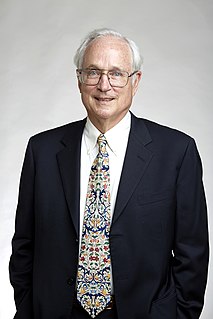
Butler W. Lampson, ForMemRS, is an American computer scientist best known for his contributions to the development and implementation of distributed personal computing.
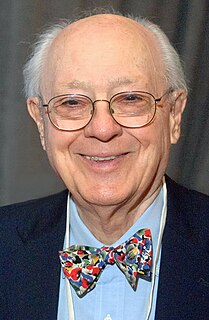
Charles William Bachman III was an American computer scientist, who spent his entire career as an industrial researcher, developer, and manager rather than in academia. He was particularly known for his work in the early development of database management systems. His techniques of layered architecture include his namesake Bachman diagrams.

John McCarthy was an American computer scientist and cognitive scientist. McCarthy was one of the founders of the discipline of artificial intelligence. He co-authored the document that coined the term "artificial intelligence" (AI), developed the Lisp programming language family, significantly influenced the design of the ALGOL programming language, popularized time-sharing, and invented garbage collection.

Howard Hathaway Aiken was an American physicist and a pioneer in computing, being the original conceptual designer behind IBM's Harvard Mark I computer.

Eugene Howard Spafford, nicknamed Spaf, is an American professor of computer science at Purdue University and a leading computer security expert.
Donald L. Bitzer is an American electrical engineer and computer scientist. He was the co-inventor of the plasma display, is largely regarded as the "father of PLATO", and has made a career of improving classroom productivity by using computer and telecommunications technologies.
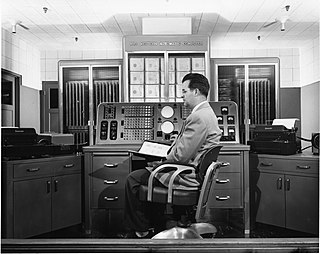
The SWAC was an early electronic digital computer built in 1950 by the U.S. National Bureau of Standards (NBS) in Los Angeles, California. It was designed by Harry Huskey.
The Charles Babbage Institute is a research center at the University of Minnesota specializing in the history of information technology, particularly the history of digital computing, programming/software, and computer networking since 1935. The institute is named for Charles Babbage, the nineteenth-century English inventor of the programmable computer. The Institute is located in Elmer L. Andersen Library at the University of Minnesota Libraries in Minneapolis, Minnesota.
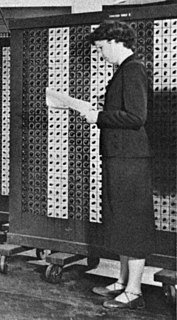
Frances Elizabeth Holberton was an American computer scientist who was one of the six original programmers of the first general-purpose electronic digital computer, ENIAC. The other five ENIAC programmers were Jean Bartik, Ruth Teitelbaum, Kathleen Antonelli, Marlyn Meltzer, and Frances Spence.
Douglas Taylor "Doug" Ross was an American computer scientist pioneer, and chairman of SofTech, Inc. He is most famous for originating the term CAD for computer-aided design, and is considered to be the father of Automatically Programmed Tools (APT), a programming language to drive numerical control in manufacturing. His later work focused on a pseudophilosophy he developed and named Plex.

George Elmer Forsythe was an American computer scientist and numerical analyst who founded and led Stanford University's Computer Science Department. Forsythe is often credited with coining the term "computer science" and is recognized as a founding figure in the field.
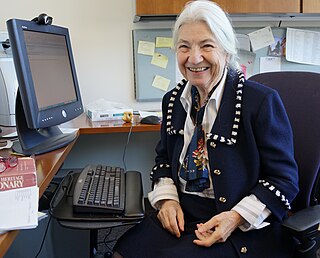
Ruzena Bajcsy is an American engineer and computer scientist who specializes in robotics. She is Professor of Electrical Engineering and Computer Science at the University of California, Berkeley, where she is also Director Emerita of CITRIS.
The American Federation of Information Processing Societies (AFIPS) was an umbrella organization of professional societies established on May 10, 1961, and dissolved in 1990. Its mission was to advance knowledge in the field of information science, and to represent its member societies in international forums.

This is a timeline of women in computing. It covers the time when women worked as "human computers" and then as programmers of physical computers. Eventually, women programmers went on to write software, develop Internet technologies and other types of programming. Women have also been involved in computer science, various related types of engineering and computer hardware.
The Engineering and Technology History Wiki (ETHW) is a MediaWiki-based website dedicated to the history of technology. It started operating in 2015. It consists of articles, first-hand accounts, oral histories, landmarks and milestones.
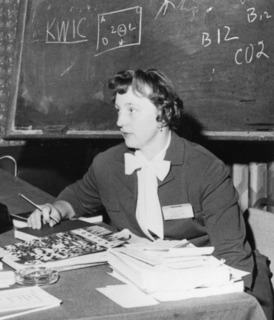
Claire Kelly Schultz was a leading figure in the early development of automated information retrieval systems and information science.
Margaret R. Taber was a pioneer for women in engineering. She was an electrical and electronics engineering educator. She was the author of several nonfiction books and articles on computer programming. She has had computer labs named in her honor. She has established scholarships in her name.
References
- ↑ "Specifically SWE In Memoriam". Society of Women Engineers. 58 (Spring 2012).
- ↑ Ganly, J.; Nealon, M. "Celebrating Women in Computer Science" (PDF). The New York Public Library.
- 1 2 Margaret R. Fox Papers, 1935-1976. Finding Aid. Charles Babbage Institute, University of Minnesota
- ↑ Oral history interview with Margaret R. Fox, interviewed April 13, 1984, by James Baker Ross. Charles Babbage Institute, University of Minnesota.
- ↑ "Three County Colleges Take Part in NBS Computer Science Program". The News. March 12, 1970.
- 1 2 "Proceedings of the First International Conference of Women Engineers and Scientists" (PDF). Society of Women Engineers. June 15, 1964. Retrieved February 26, 2014.
- ↑ "News About Z39: Quarterly Reports" (PDF). American National Standards Institute. January 1973.
- ↑ "Margaret R. Fox: Pioneering Women in Computing Technology". The Ada Project. Retrieved February 26, 2014.
- ↑ "Individual Awards - Society of Women Engineers". swe.org. 14 December 2018. Retrieved 2021-10-13.